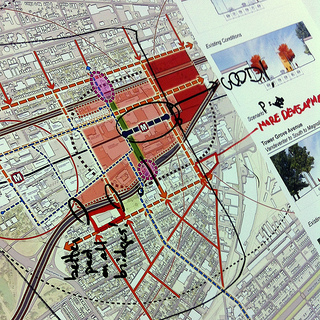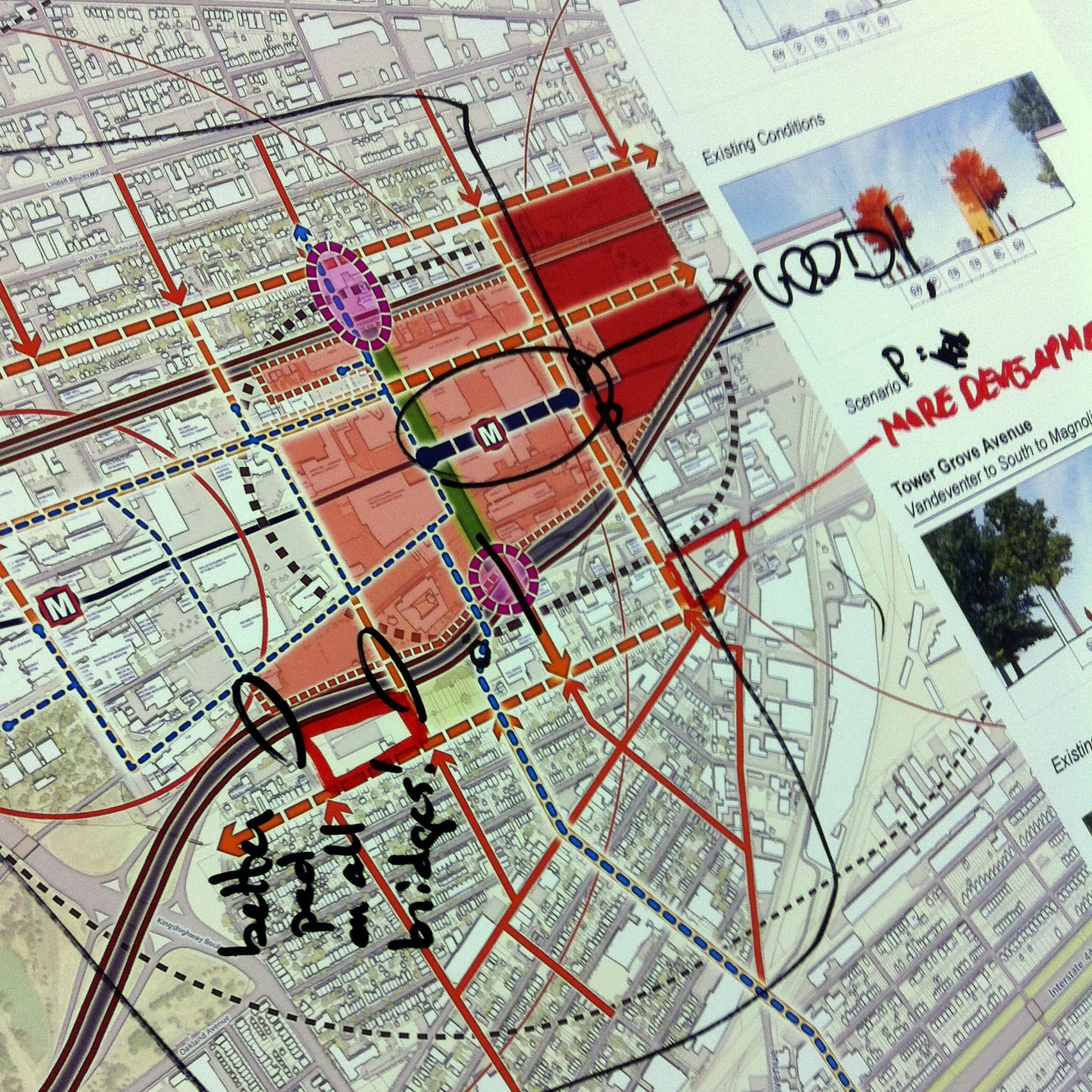 The “Help Plan a MetroLink Station” event held at the CORTEX I building, just one block from the proposed new station at Boyle Avenue spent little time on the station itself. This may be obvious, but it is also the overriding point to be made; transit stations exist to serve a community, and connections to people and places determine transit success.
The “Help Plan a MetroLink Station” event held at the CORTEX I building, just one block from the proposed new station at Boyle Avenue spent little time on the station itself. This may be obvious, but it is also the overriding point to be made; transit stations exist to serve a community, and connections to people and places determine transit success.
The station itself is not a sure thing, but with CORTEX, the Washington University and Barnes-Jewish Hospital medical campus, University of Missouri-St. Louis, Missouri Botanical Garden, and others supporting its study, and presumably providing partial funding, it is likely. The key to breaking ground is justifying the new station based on the predicted net increase in ridership. Metro wants to know the station will be used before committing to add it to the system, changing existing line schedules and committing the agency to maintenance and security.
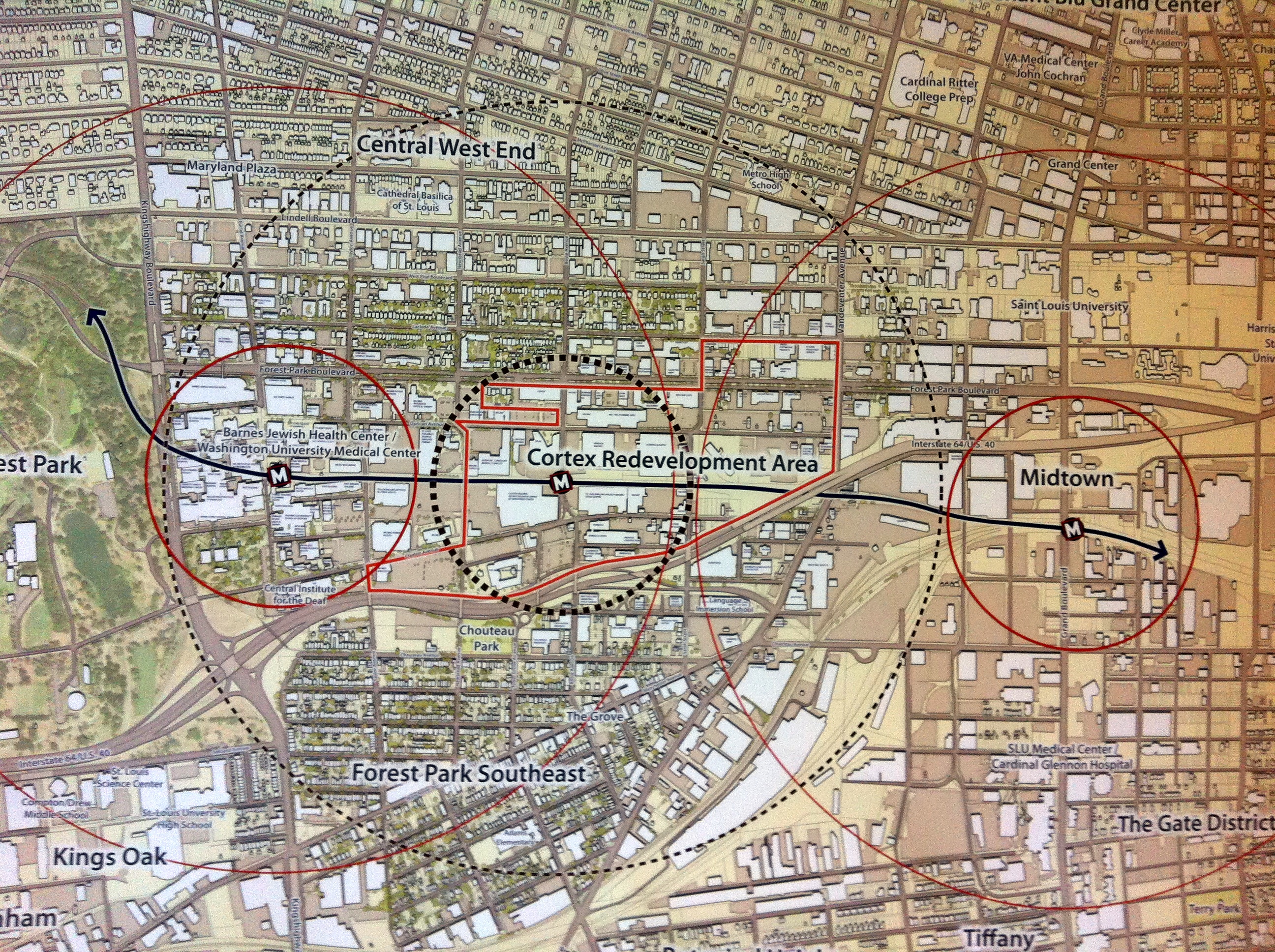
{a new MetroLink station would serve CORTEX and adjacent neighborhoods}

This represents a significant stumbling block as the current predicted net increase in daily boardings for the new station is just 600-700. More riders than that would use the station, but some would simply come from the existing CWE stop. While not counting as new ridership, this could relieve some of the rush hour crowding at the busiest stop on the system. This could delay the need to expand platforms or reconfigure the CWE station, an issue that has arisen several times in recent years.
With just 600-700 new boardings, the Boyle station would currently be in the bottom 1/4 of all system stations. The goal stated at the public meeting is to increase this number to ~1,300 by 2030. Frankly, this is where bureaucracy obscures good planning. How is anyone supposed to predict ridership for a light rail station nearly 20 years from now? You might as well attempt to predict gas prices and federal/state transportation policy – you make a lot, a lot of assumptions. From strictly a numbers game there’s no other way, but that’s the point. If Metro is interested in Transit Oriented Development, if the city and region are interested in sustainability, the addition of this station is simply commonsense and should be supported.
But to continue briefly with the numbers game: CORTEX is planning to develop 4.25M square feet of space in the next two decades, adding 11,500 jobs to the district. That effort will take a significant leap forward beginning this year. The ridership numbers assume that existing medical campus employment remains constant. The numbers also assume that no new ridership will come from south of I-64 as the current MoDOT plan for the four I-64 overpasses include only the minimum 5 to 6-foot sidewalks, not enough to induce new ridership, they say.
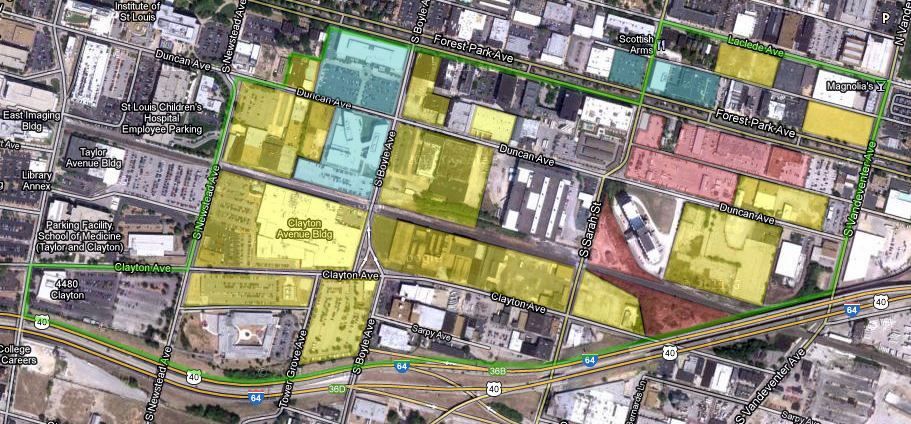
{existing buildings in blue – CORTEX owned land in yellow – city/Laclede Gas/Bi-State land in red}
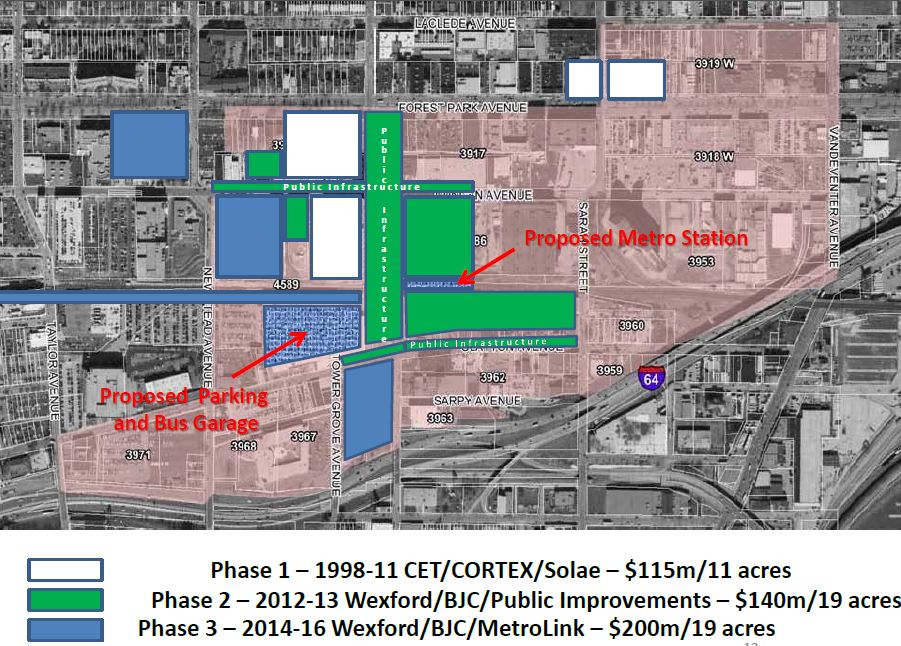
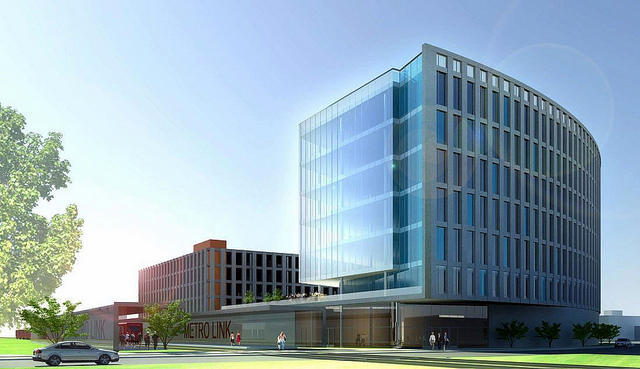
{possible new construction adjacent to proposed MetroLink station}
The point is that while the station and our transit system, can’t ignore standardized measures, they should also reflect the city we want to be and the neighborhoods we want to live in. The design of the four overpasses is a 50-year decision. Where is the local leadership to ensure that the millions spent will better connect the city and augment transit ridership? Why isn’t the Alderman, or the St. Louis Development Corporation, or CORTEX demanding more of MoDOT? Surely the availability of funds plays a part, but it’s absolutely necessary to get it right.
The basic feedback provided by meeting attendees was this: the effort to connect CORTEX to surrounding neighborhoods and the city is necessary and important regardless of whether a new station is built. Reducing Tower Grove Avenue to two traffic lanes and adding dedicated bike lanes, even a possible cycling track – a bike lane between street parking and the tree lawn? Sure. Making Duncan Avenue a pedestrian-priority street? Of course. Introducing residential and mixed-use development within CORTEX? Yes! A green common space? Why not.

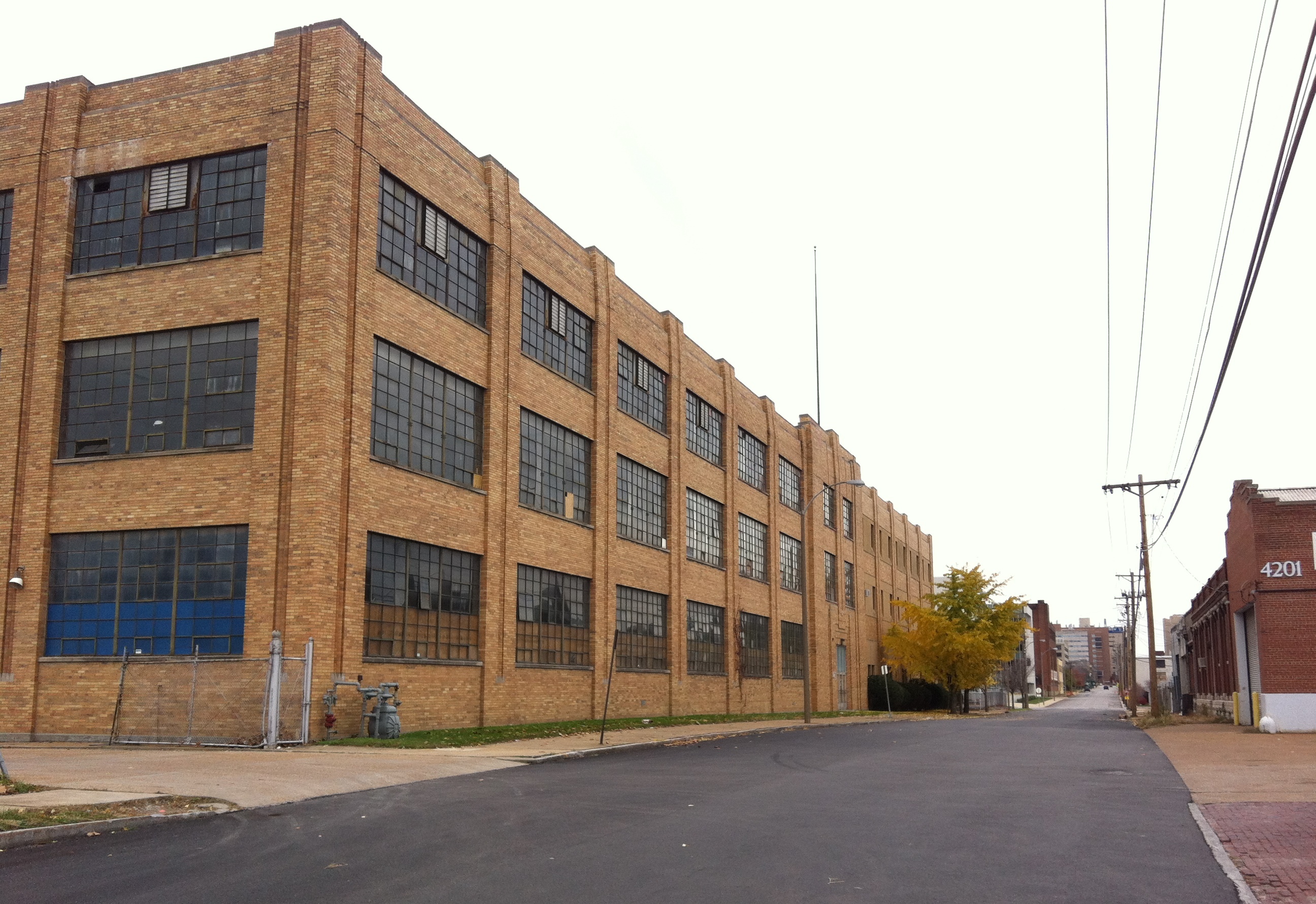
{Duncan Avenue would prioritize pedestrians with an improved streetscape}
The problem is that all of the above is presented as a kitchen sink approach-everything that can be thrown at the area to induce transit use. What will be built is very likely to be less and, the connections to the surrounding neighborhoods are less likely to be completed than the station itself. The connections are treated primarily as a means to and end and unfortunately not an end themselves.
The meeting presented a number of new good ideas. The station could have access from both Boyle and Sarah Avenues, similar to the CWE station that can be reached directly from Euclid and Taylor Avenues. This is important as it puts the station psychologically closer to more people. The apparent openness by CORTEX to introduce retail and possibly even residential development within the district is very positive as well. In addition, there was recognition that continuing to build parking facilities will create a disincentive to use transit.
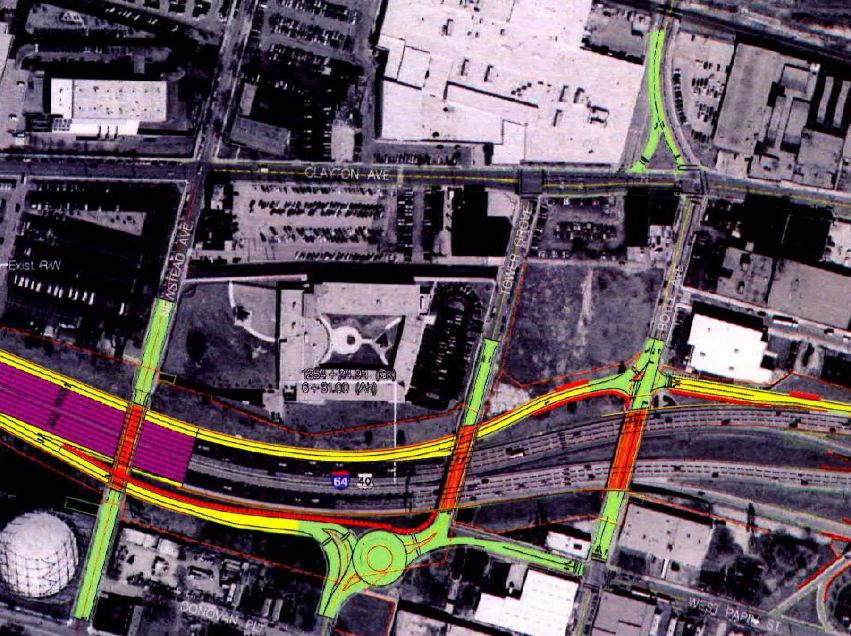
{a new Tower Grove Avenue interchange and I-64 overpasses have been designed, but must be improved}
A recent “call for inspiration” for the medical campus and CORTEX was addressed by architecture firm Skidmore, Owings & Merrill with the charge to “think like a city”. It’s evident that this is understood by CORTEX. And yet there remain many points of conflict. The coming I-64 interchange at Tower Grove Avenue will introduce a significant conflict on the most traveled cycling route to the area from the south. If the interchange and roundabout prove to be a danger for cyclists and pedestrians, possible MetroLink ridership from neighborhoods to the south will be negatively impacted. The interchange is largely meant to serve CORTEX and the medical campus, serving drivers and relieving traffic from Kingshighway. It is being partially funded by those entities.
One idea suggested to address the conflict would be a pedestrian bridge across I-64 parallel to Tower Grove Avenue. Its effectiveness would heavily depend on how cyclists would transition from street to bridge and back to the street. A better solution would be to introduce cycling lanes on each of the four overpasses as well as 6 to 8-foot sidewalks to accommodate pedestrians and cyclists.
Whether or not the Boyle Avenue MetroLink station is built, there’s an opportunity, and an incentive, to better connect surrounding neighborhoods to CORTEX. It’s unfortunate that the kitchen sink can’t be thrown at the connectivity issues on their own merit. With luck, the station can be the impetus for the other changes and perhaps help align CORTEX, MoDOT and the City in a common cause. If nothing else, at least the conversation has started and public input is being solicited.

